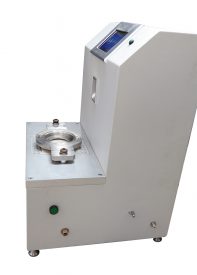Fabric for use in garments require higher levels of waterproofing because garments are subjected not only to driving rain but also to pressure applied by straps and hipbelts of rucksacks.

A higher HH does not guarantee a better garment since breathability is usually a compromise when water proof performance is maximised.Softshell garments come in a range of different types from lightweight highly breathable that won’t put up with much rain, to heavier more water resistant garments that are often made from waterproof fabrics – the garment is not called ‘waterproof’ because the seams aren’t ‘taped’.
Influencing Factors of Waterproof for Fabrics:
The fabric permeability is the ability of liquid water to penetrate from one side to the other. There are three main factors affecting for the waterproof and water permeability of the fabric.
The wettability of fiber surface: The wettability of fiber is related to the compactness of fiber structure when the structure is close, the waterproof effect is better.
Fabric coating: Adopt waterproof, a multi-microporous coating can form a good waterproof, water permeability, and good air permeability coating fabric, mostly used in cloak or rain cloak, and so on.
Environment: For water conducting fabric, the relative humidity increases, the moisture absorption of the fiber increases, and the water conductivity of the fabric increases.
 A higher HH does not guarantee a better garment since breathability is usually a compromise when water proof performance is maximised.Softshell garments come in a range of different types from lightweight highly breathable that won’t put up with much rain, to heavier more water resistant garments that are often made from waterproof fabrics – the garment is not called ‘waterproof’ because the seams aren’t ‘taped’.
Influencing Factors of Waterproof for Fabrics:
The fabric permeability is the ability of liquid water to penetrate from one side to the other. There are three main factors affecting for the waterproof and water permeability of the fabric.
The wettability of fiber surface: The wettability of fiber is related to the compactness of fiber structure when the structure is close, the waterproof effect is better.
Fabric coating: Adopt waterproof, a multi-microporous coating can form a good waterproof, water permeability, and good air permeability coating fabric, mostly used in cloak or rain cloak, and so on.
Environment: For water conducting fabric, the relative humidity increases, the moisture absorption of the fiber increases, and the water conductivity of the fabric increases.
A higher HH does not guarantee a better garment since breathability is usually a compromise when water proof performance is maximised.Softshell garments come in a range of different types from lightweight highly breathable that won’t put up with much rain, to heavier more water resistant garments that are often made from waterproof fabrics – the garment is not called ‘waterproof’ because the seams aren’t ‘taped’.
Influencing Factors of Waterproof for Fabrics:
The fabric permeability is the ability of liquid water to penetrate from one side to the other. There are three main factors affecting for the waterproof and water permeability of the fabric.
The wettability of fiber surface: The wettability of fiber is related to the compactness of fiber structure when the structure is close, the waterproof effect is better.
Fabric coating: Adopt waterproof, a multi-microporous coating can form a good waterproof, water permeability, and good air permeability coating fabric, mostly used in cloak or rain cloak, and so on.
Environment: For water conducting fabric, the relative humidity increases, the moisture absorption of the fiber increases, and the water conductivity of the fabric increases.